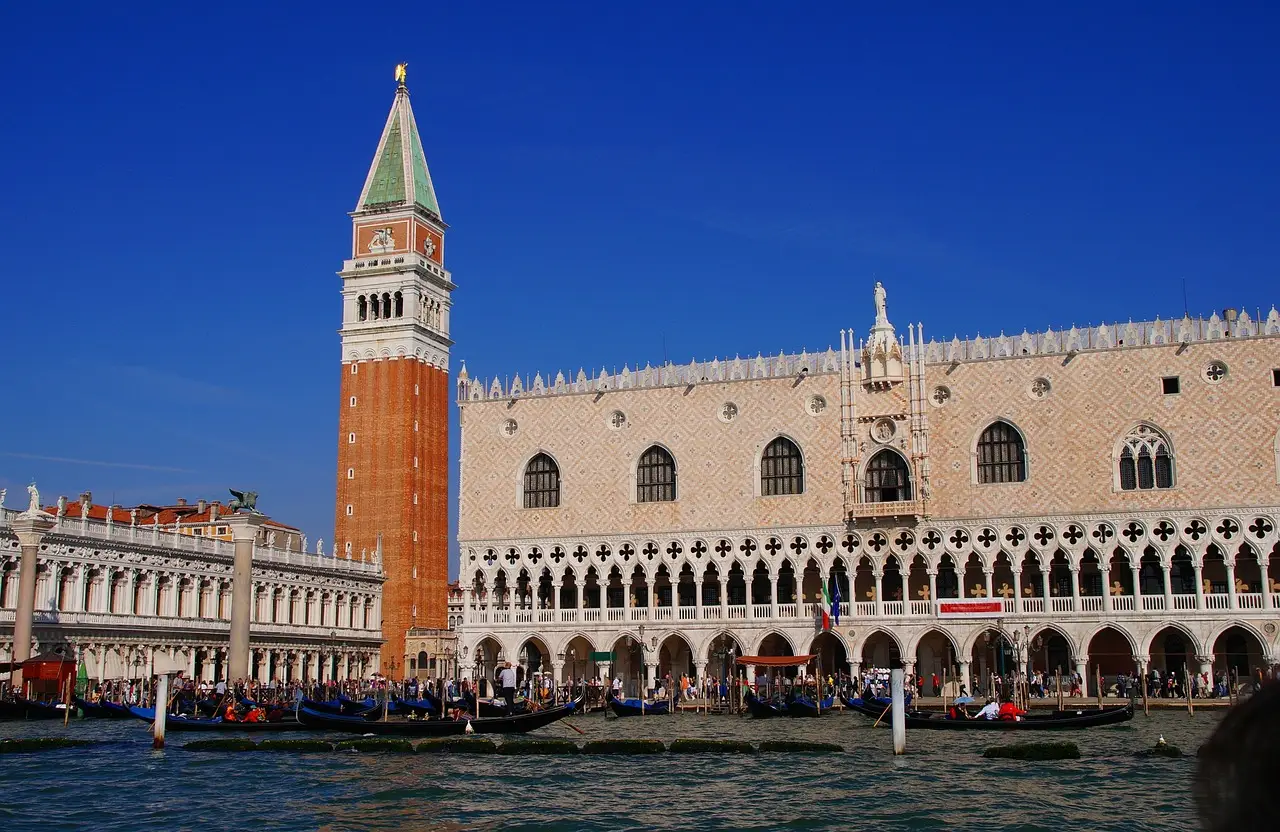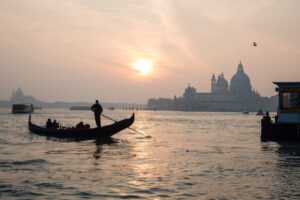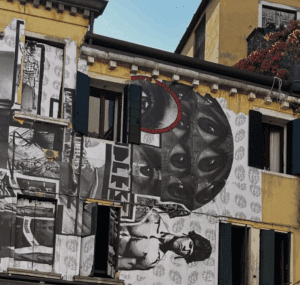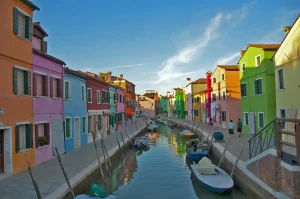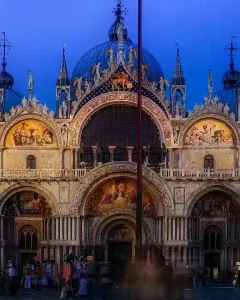🏛️ Inside the Doge’s Palace: Power, Art, and the Story of Venice’s Most Famous Ruler
Behind Venice’s pink-and-white façade lies a thousand years of politics, pageantry, and power.
👑 Introduction: The Heart of the Venetian Republic
Venice — the floating city of canals and gondolas — hides within its heart one of Europe’s greatest treasures: the Doge’s Palace (Palazzo Ducale). To understand this masterpiece, we first have to meet the man who defined its purpose: the Doge of Venice.
For over a millennium, the Doge embodied the pride, discipline, and contradictions of the Venetian Republic. Neither king nor emperor, he was elected for life — a ruler who reigned from a palace, not a throne, and whose power was as intricate as the city’s own canals.
⚜️ The Doge: Venice’s Unique Leader
The word Doge (pronounced “dohzh,” from the Latin dux, meaning leader) refers to the supreme magistrate of Venice — a title held by 120 men from 697 to 1797. But unlike monarchs who inherited crowns, the Doge was elected for life through one of history’s most elaborate and democratic-for-its-time systems.
🗳️ The Most Complicated Election in Europe
Venice’s electoral process was designed to do one thing: prevent corruption. Through a dizzying sequence of ballots, lotteries, and councils drawn from the city’s noble families, the republic ensured that no single faction could control power. The process could take days — and by the end, the chosen Doge was usually as surprised as everyone else.
It was a living symbol of what made Venice different: a state ruled by balance, order, and the belief that collective wisdom outshines ambition.
⚖️ Powers and Limitations
The Doge represented Venice abroad, presided over the Senate, and wore elaborate robes and the famous corno ducale — the horn-shaped hat of office. Yet his power was tightly limited. He couldn’t make major decisions alone, couldn’t open letters from foreign rulers without witnesses, and couldn’t even leave the city without permission.
He was, quite literally, the first among equals. Venice was a republic built not on charisma, but on consensus.
🕰️ Famous Doges Who Changed History
- Enrico Dandolo (1192–1205) — the blind Doge who led the Fourth Crusade and captured Constantinople, extending Venetian influence across the Mediterranean.
- Francesco Foscari (1423–1457) — Venice’s longest-serving Doge, who transformed the city into a mainland power but paid a tragic personal price for ambition.
- Leonardo Loredan (1501–1521) — immortalized by Giovanni Bellini’s portrait, he steered Venice through war and plague with statesmanlike calm.
Each Doge left an imprint not only on history but on the palace itself — its halls lined with portraits that once reminded every visitor of the republic’s enduring legacy.
🏰 The Doge’s Palace: Symbol of Power and Beauty
Overlooking the St. Mark’s Basin and facing the Basilica of San Marco, the Doge’s Palace stands as a fusion of art, architecture, and politics. It was both home to the Doge and headquarters of Venice’s government — a Gothic fantasy of arches, marble, and mosaics that told the world, “We are powerful, and we are different.”
✨ Architectural Masterpiece
Its pink Verona marble and white Istrian stone form a striking checkerboard pattern that glows at sunset. The design defies logic: heavy council chambers rest above open arcades, creating a sense of weightless grace. The palace blends Byzantine, Gothic, and Renaissance influences — proof that Venice, positioned between East and West, absorbed ideas like it absorbed trade.
The older façade faces the lagoon; the more famous one gazes toward St. Mark’s Square, the republic’s grand stage.
🎨 Inside the Palace: Art, Politics, and Splendor
Walking through the palace feels like walking through Venetian history — every ceiling, corridor, and chamber whispers of intrigue and empire.
⭐ The Golden Staircase (Scala d’Oro)
Once reserved for ambassadors and nobles, this gilded staircase dazzles with gold leaf and stucco. Climbing it symbolized entering the heart of Venetian power.
🏛️ The Hall of the Great Council
One of Europe’s largest rooms, it could hold up to 2,000 members of the Venetian nobility. Here, debates shaped centuries of policy. The walls burst with vast paintings by Tintoretto, Veronese, and Bellini — their colors still echoing with the pride of the republic. Tintoretto’s Paradise, one of the largest oil paintings in the world, dominates the hall.
🕍 The Doge’s Apartments
These private quarters reveal another side of power — velvet-lined chambers, tapestries, and portraits of saints and ancestors. Luxury, yes — but also discipline: the Doge lived surrounded by reminders of duty, not indulgence.
🎭 The Sala del Collegio
Here, the Doge met foreign ambassadors beneath Veronese’s luminous ceiling paintings. Diplomacy in Venice was as theatrical as it was strategic.
🌉 The Bridge of Sighs — Between Glory and Captivity
Built in 1603, the Bridge of Sighs (Ponte dei Sospiri) connects the Doge’s Palace to the New Prison across the canal. Through its tiny stone windows, prisoners caught their last glimpse of Venice before imprisonment — hence, the sighs. The name was immortalized by Lord Byron, who romanticized the moment when beauty and despair met mid-bridge.
Today, you can cross it yourself on the Doge’s Palace and St. Mark’s Basilica Skip-the-Line Tour — and imagine the footsteps of those who once walked this same passage.
🕵️♂️ Secrets and Shadows: The Hidden Venice
Beneath the gilded ceilings, Venice hid a darker side. The palace’s Secret Itineraries Tour reveals hidden passages, torture chambers, and even Casanova’s prison cell — from which the legendary lover famously escaped.
These rooms tell the story of Venice’s intelligence network and its obsession with control. Behind every festival mask, the republic kept meticulous watch over its citizens.
Want to explore this side of Venice? Try our off-the-beaten-path orientation tour — perfect for discovering the real life behind the romance.
⚓ The Fall of the Republic
In 1797, after more than a thousand years of independence, Venice surrendered to Napoleon Bonaparte. The last Doge, Ludovico Manin, removed his ceremonial hat — the corno ducale — and said, “This will not be needed anymore.”
With that gesture, the Venetian Republic — one of the longest-lasting governments in history — came to an end. The palace became a silent witness to the passing of an era.
🎟️ Visiting the Doge’s Palace Today
Today, the Doge’s Palace is a UNESCO World Heritage Site and one of Venice’s most visited landmarks. It’s more than a museum — it’s a time capsule of the republic’s golden age.
What to See
- The Doge’s private apartments
- The Hall of the Great Council and Tintoretto’s Paradise
- The Bridge of Sighs and the New Prison
- Rotating exhibitions exploring art and politics
⏰ Planning Tips
- Book skip-the-line tickets in advance — the queues can be long, especially in summer.
- Combine your visit with St. Mark’s Basilica for a complete picture of Venetian glory.
- Consider a private guided tour to uncover hidden details most visitors miss.
You can also explore skip-the-line options through our trusted partner — book your Doge’s Palace tickets here.
💬 Why Visit with a Local Guide
Walking through the Doge’s Palace alone is impressive; walking it with a Venetian guide is unforgettable. Our licensed guides bring its walls to life — revealing political secrets, architectural marvels, and human stories hidden behind the marble.
As locals, we don’t just explain what you see — we tell you why it mattered, and how it still echoes in Venice today.
🪶 Conclusion: The Palace That Defines Venice
The Doge’s Palace is more than a monument — it’s Venice itself in stone form. For over a thousand years, it embodied the republic’s ideals: balance, beauty, and resilience. Within its walls, decisions were made that shaped trade routes, art movements, and even empires.
Every visitor who walks its corridors retraces the footsteps of Doges, diplomats, and dreamers who built one of the most extraordinary civilizations in history.
Want to experience it for yourself? Join us for the Doge’s Palace & St. Mark’s Basilica private tour — and let Venice’s past unfold right before your eyes.
Because in Venice, history doesn’t live in books — it lives in marble, light, and water.
FAQ
Can I visit both the Doge’s Palace and St. Mark’s Basilica together?
Yes — and it’s the best way to experience Venice’s Golden Age in one seamless visit. Our Doge’s Palace & St. Mark’s Basilica Skip-the-Line Private Tour includes priority entry, licensed Venetian guides, and a walk across the Bridge of Sighs. You’ll uncover the political secrets of the Doge’s Palace and the sacred splendor of St. Mark’s without waiting in line.
What’s the best way to skip the lines at the Doge’s Palace?
To avoid long queues, always book skip-the-line tickets in advance. You can secure your Doge’s Palace Fast Track Ticket or join a private guided tour with Tour Leader Venice for a smoother, more personal experience. Our guides handle logistics, share local insight, and reveal details most visitors overlook — from Tintoretto’s Paradise to the secret prison passages beneath the palace.
Is the Bridge of Sighs part of the visit?
Yes — every full Doge’s Palace itinerary includes a walk through the Bridge of Sighs, which links the palace to the New Prison. You’ll step where prisoners once sighed at their last glimpse of Venice. This unforgettable moment is part of our Doge’s Palace & St. Mark’s Basilica Skip-the-Line Private Tour, led by expert local storytellers.

